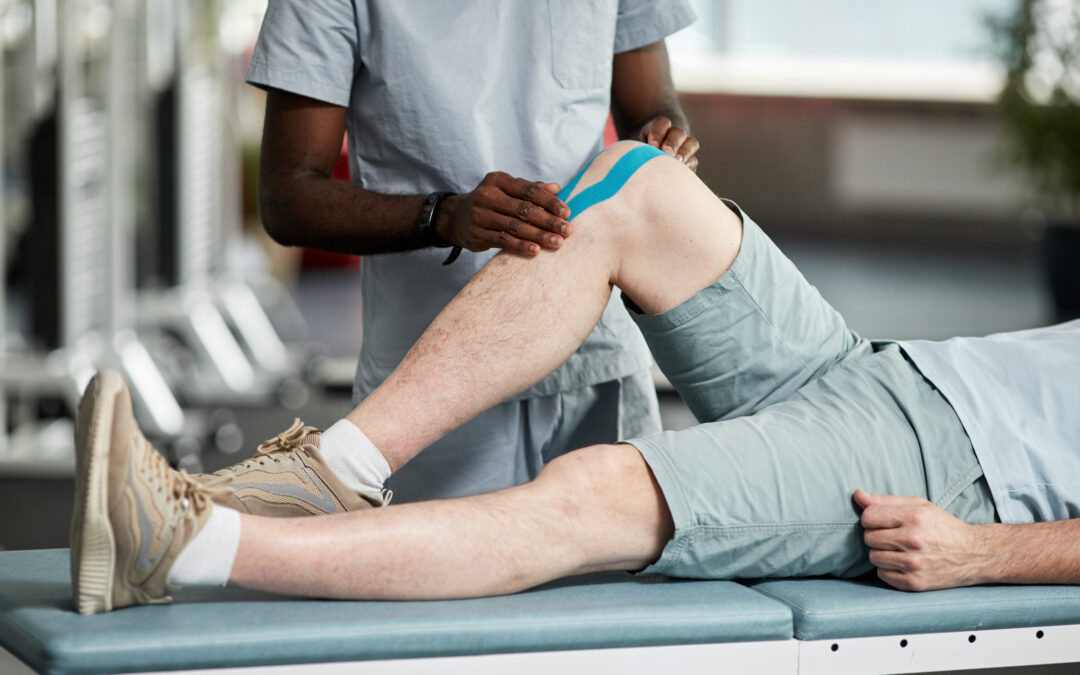Contents
Your knee is a complex joint that plays a vital role in your daily life. It’s like a hinge, allowing you to bend, straighten and rotate your leg. This incredible joint is composed of several key components:
- Bones — The femur (thighbone), tibia (shinbone) and patella (kneecap) form the bony framework of your knee.
- Cartilage — A smooth, slippery tissue called cartilage covers the ends of the bones, reducing friction and enabling smooth movement.
- Ligaments — Ligaments are tough, fibrous bands of tissue that connect the bones, providing stability and limiting excessive movement.
- Tendons — Tendons are strong, fibrous cords that connect muscles to bones, allowing for muscle contraction and movement.
These joints take on significant pressure — whether you’re lifting something heavy, working out or just going about your day. Because they handle so much, your knees can fall prey to issues like arthritis, injuries and cysts, all of which can impact your mobility and quality of life. These issues can sometimes cause your knees to become swollen.
What is knee swelling?
Knee swelling occurs when excess fluid builds up in the tissue around the knee joint, causing symptoms such as:
- Visible swelling — A noticeable bulge around the knee joint
- Pain — Tenderness, aching or sharp pain in the affected knee
- Stiffness — Difficulty bending or straightening the affected knee
- Redness — The skin around the knee may become red or warm to the touch.
Several factors can contribute to knee swelling, including:
- Overuse injuries — Repetitive stress on the knees, such as from running or jumping, can lead to inflammation and swelling.
- Arthritis — Conditions like osteoarthritis and rheumatoid arthritis can cause inflammation and swelling in the knee joint.
- Bursitis — Inflammation of the fluid-filled sacs, bursae, that cushion your joints, including the knees, can cause swelling and pain.
- Sprains and tears — Injuries to the ligaments or tendons around the knee can cause swelling.
- Infection — Bacterial or viral infections can cause inflammation and swelling in the knee joint.
- Patellofemoral pain syndrome — Also known as runner’s knee, this condition causes pain around or under the kneecap, often accompanied by swelling.
- Tendinitis — Inflammation of the tendons around the knee can lead to swelling and pain.
- Dislocation — A dislocated kneecap can lead to severe swelling and pain.
- Fracture — A broken bone in the knee can cause significant swelling and pain.
If you are experiencing persistent knee swelling or pain, it’s essential to consult with a health care professional for a proper diagnosis and treatment plan.
Treatment options that can help tame swollen knees
If you’re dealing with a swollen knee, there are several treatment options available to help alleviate pain and promote healing, including:
- Pain medication — Over-the-counter pain relievers like ibuprofen or acetaminophen can help reduce pain and inflammation.
- RICE method — This treatment approach is a classic treatment that can help reduce swelling and pain. RICE stands for:
- Rest — Take time to rest and avoid activities that make your knee pain and swelling worse.
- Ice — Apply ice packs to your knee as directed by your health care provider.
- Compression — Wrapping your knee in an elastic bandage can help reduce swelling.
- Elevate — Elevating your leg above your heart while you rest can also help reduce swelling.
- Assistive devices — Using a cane or crutches can help reduce weight-bearing on your affected knee, giving it time to rest and heal.
- Braces — Wearing a knee brace can provide support and stability to your affected knee joint. Braces can help reduce stress and promote healing.
- Physical therapy — Working with a physical therapist can help you strengthen the muscles around your knee, improve flexibility and reduce pain.
- Corticosteroid injections — In severe cases, your health care provider may recommend a corticosteroid injection. These injections can help temporarily reduce inflammation and pain.
- Surgery — In more severe cases, surgery may be necessary to repair damaged tissue or address other underlying issues that could be causing your swollen knee.
The best treatment for your swollen knee will depend on the underlying cause and the severity of your symptoms.
5 ways a physical therapist can help your swollen knee
Physical therapy can be a powerful tool in treating a swollen knee. It can help reduce pain, improve range of motion and boost the healing process. Your physical therapist will do a thorough evaluation to determine the underlying cause of your swollen knee. They will use this information to create a personalized treatment plan designed to address your symptoms and concerns. Techniques your physical therapist may incorporate in your treatment plan to address your swollen knee may include:
- Manual therapy — Manual therapy is a hands-on approach that involves a variety of techniques to treat musculoskeletal conditions. These approaches include:
- Soft tissue manipulation — Your physical therapist may use their hands or special tools to apply gentle pressure to tight muscles and connective tissue around your knee. This can reduce muscle tension, boost blood flow and alleviate pain.
- Joint mobilization — Your physical therapist may use specific techniques to gently move your knee joint, which can help improve your knee’s range of motion, reduce stiffness and relieve pain. Improving joint mobility can help reduce fluid buildup and swelling.
- Therapeutic exercises — Therapeutic exercises are specifically designed to help address your unique needs and help you recover from your swollen knee. These exercises may include:
- Isometric exercises — These exercises involve contracting your muscles without moving your joints. For example, your physical therapist may direct you to press your quadriceps muscle against a resistance band while keeping your knee straight.
- Gentle range-of-motion exercises — Your physical therapist may guide you through a series of gentle movements, such as bending and straightening your knee. These exercises help maintain joint mobility and prevent stiffness.
- Proprioceptive exercises — These exercises help improve your body’s awareness of its position in space. Your physical therapist may have you balance one leg or do exercises on an unstable surface.
- Strengthening exercises — Your physical therapist may design a specific exercise program to strengthen the muscles around your knee, including the quadriceps, hamstrings and calf muscles. Strong muscles can provide better support to the knee joint, reducing stress and minimizing swelling.
- Electrical stimulation — During electrical stimulation, electrodes, which are placed on your skin near the swollen area, deliver controlled, low-level electrical impulses that cause the muscles to contract. This process can help block pain signals from reaching the brain, providing you with immediate relief from discomfort that may accompany the swelling. It can also help boost circulation, which can help reduce swelling and speed up the healing process.
- Therapeutic ultrasound — Therapeutic ultrasound is a treatment that uses high-frequency sound waves to penetrate deep into the tissue surrounding the knee. The heat generated by the ultrasound promotes increased blood flow to the knee area, which helps bring oxygen-and-nutrient-rich blood that’s essential for healing while also flushing out waste products. This can help reduce pain, stiffness and swelling.
- Aquatic therapy — Doing exercises in water can help reduce stress on your joints, improve your range of motion and alleviate pain. The buoyancy of water can help support your body weight, making it easier to do exercises without further aggravating your swollen knee.
By using these techniques, as well as other physical therapy approaches, your physical therapist can help reduce swelling in your knee and get you back to doing the things you love.
Can a swollen knee be dangerous?
While many causes of knee swelling can be relatively minor and treated at home, some can be more serious and require immediate attention. Here are some signs that your swollen knee may be serious:
- Sudden, severe pain
- Redness, warmth and fever
- Inability to bear weight
- Knee deformity
If you are experiencing any of these symptoms, you should seek medical attention immediately. Even if you think your symptoms are less severe, it’s important to consult with a health care provider to determine the underlying cause of your swollen knee and receive appropriate treatment. Early diagnosis and treatment can help prevent complications and promote healing.
Trust your journey toward relief and recovery from a swollen knee to Lattimore PT
If you’re struggling with a swollen knee, Lattimore Physical Therapy is here to help you regain your comfort and mobility swiftly. Our dedicated team of physical therapists uses a variety of effective techniques to help reduce swelling, relieve pain and promote healing. With personalized treatment plans tailored to your unique needs, we focus on addressing the root causes of your discomfort and guiding you toward a quicker recovery. Trust Lattimore PT to provide the compassionate care and specialized expertise you need to get back to your favorite activities, without the burden of a swollen knee.
Contact our team today for more information or to schedule an initial appointment.


